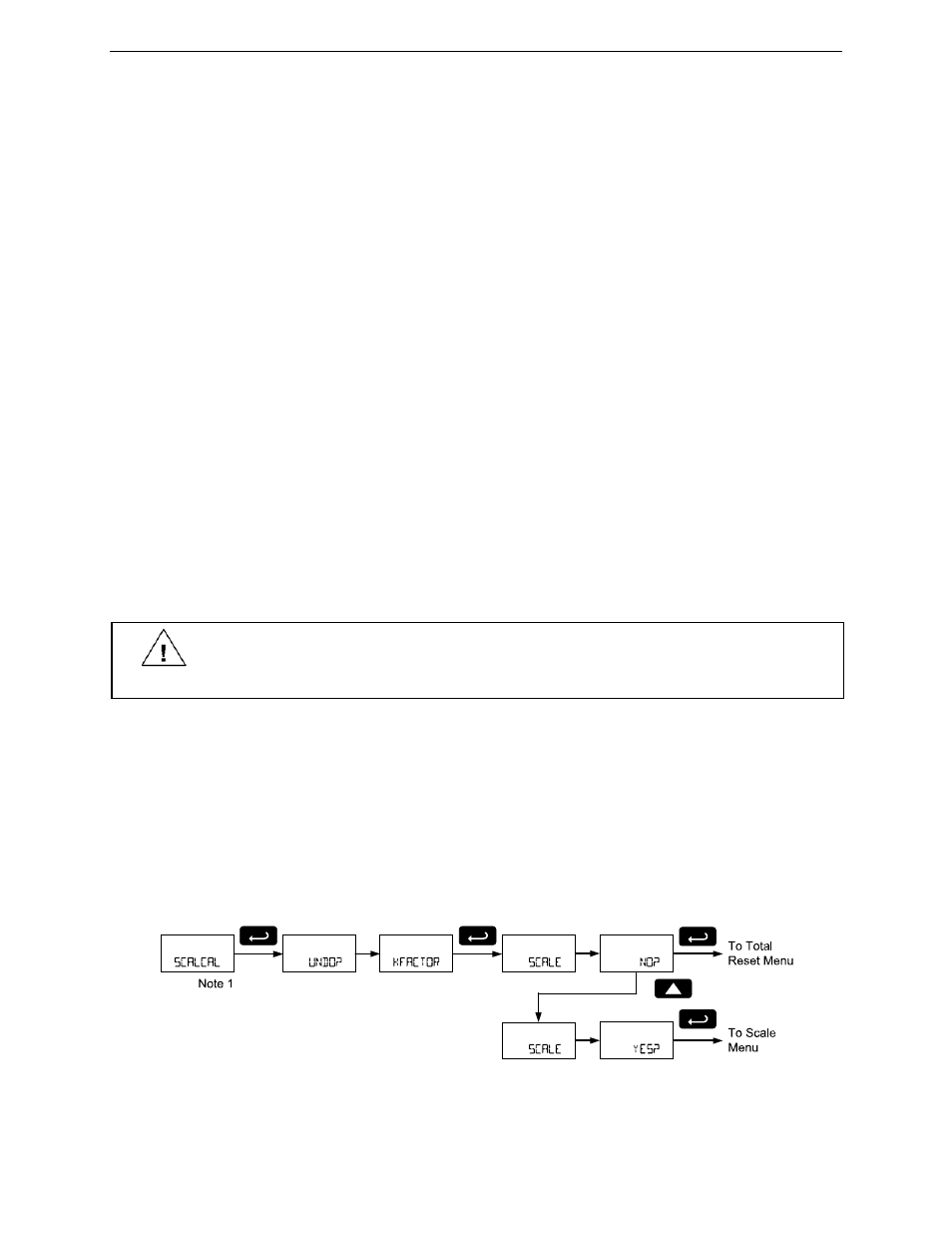Precision Digital PD6730X User Manual
Page 76

PD6730X Vantageview Super Snooper Modbus Scanner
Instruction Manual
76
High Gate (HI GATE)
Set the high gate value to correspond to the highest expected pulse period (lowest pulse rate). For
instance if the meter must display a rate when there is 1 pulse coming into the meter every 10 seconds,
set the high gate to 11 seconds. When the signal is removed from the meter, the display will show the last
reading for 11 seconds; then it will read zero.
To enter the High Gate, press Enter to select High Gate (HI GATE) and program the gate setting in
seconds. See Setting Numeric Values on page 24 for more information.
Contact Debounce Filter (FILTER)
The filter function (FILTER) can be used for applications where the meter is set up to count pulses
generated by switch contacts. There are three settings, HI (high speed), MED (medium speed), and LO
(low speed). High speed disables the contact debounce filter and allows any pulse of the minimum
specified width for the selected input type.
The medium filter ignored signals faster than 250 Hz max, or pulse widths less than 2 ms at 50% duty
cycle. The low filter ignores signals higher than 100 Hz, or pulse widths less than 5 ms at 50% duty cycle.
Press the Up arrow to cycle through the Filter options. Press Enter when HI, MED, or LO is displayed to
enable that filter setting.
Low-Flow Cutoff (CUTOFF)
The low-flow cutoff feature allows the meter to be programmed so that the often-unsteady output from a
transmitter at low flow rates, always displays zero on the meter.
The cutoff value may be programmed from 0 to 99999. Below the cutoff value, the meter will display zero.
Programming the cutoff value to zero disables the cutoff feature.
To enter the Cutoff, see Setting Numeric Values on page 24 for more information.
Pulse Input Scaling & Calibration (SCALCAL)
It is very important to read the following information, before proceeding to program the meter:
There is no need to recalibrate the meter for frequency in Hz when first received from the factory.
The meter is factory calibrated for Hz prior to shipment. The calibration equipment is certified to NIST
standards.
IMPORTANT
Performing a pulse input scaling operation will override any k-factor
programming.
Similarly, completing the k-factor menu will override any pulse input
scaling operation performed on the meter. Verify the method of programming required
and use the password protection feature to secure the meter if necessary.
There are two methods of programming the pulse input rate display to show the correct engineering units.
Use the KFactor menu to enter a k-factor. This is the most common way to program the pulse input. For
details on scaling the meter using the k-factor, see Entering the K-Factor (KFACTOR) on page 59.
Use the Pulse Input Scaling & Calibration menu to scale the pulse input using up to 32 input and display
points. Each point includes a frequency input and a corresponding display value. All scale points are
scaled linearly.
Undoing K-Factor or Scale Programming (UNDO? KFACTOR)
Whenever the input programming is being changed from using k-factor to scaling; or from scaling to k-
factor, a confirmation menu appears. This prevents accidental changing of the input programming.
The example below shows a meter programmed with a k-factor being reprogrammed to utilize pulse input
scaling.
